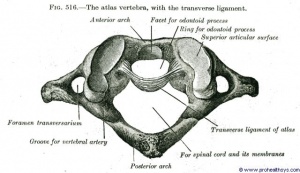Transverse Ligament Stress Test: Difference between revisions
Tamara Eller (talk | contribs) No edit summary |
Tamara Eller (talk | contribs) No edit summary |
||
| Line 1: | Line 1: | ||
Be the first to edit this page and have your name permanently included as the original editor, see the [[Editing pages|editing pages tutorial]] for help. | |||
{| class="FCK__ShowTableBorders" style="border-right: rgb(163,177,191) 1px solid; border-top: rgb(163,177,191) 1px solid; float: right; margin: 15px 0pt 0pt; vertical-align: top; border-left: rgb(163,177,191) 1px solid; width: 300px; color: rgb(0,0,0); border-bottom: rgb(163,177,191) 1px solid; background-color: rgb(227,228,250)" cellspacing="5" cellpadding="2" | |||
|- | |||
| style="color: rgb(0,0,0)" | | |||
Original Editor - Your name will be added here if you created the original content for this page. | |||
Lead Editors - Your name will be added here if you are a lead editor on this page. [[Physiopedia:Editors|Read more.]] | |||
|} | |||
<br> | |||
== Purpose<br> == | |||
Test for hypermobility of the atlantoaxial articulation.<br> | |||
== Technique <ref>↑ Dutton, M. (2008). Orthopaedic: Examination, evaluation, and intervention (2nd ed.). New York: The McGraw-Hill Companies, Inc.</ref> == | |||
[[Image:Gray516.jpg|thumb]] | |||
*The patient is placed in a supine postion with the Therapist supporting the patient's head with the palms and 3rd-5th fingers. | |||
*The Therapist then places the index fingers between the occiput and spinous process of C2, so the index fingers are over the neural arch of the C1 vetebra. | |||
*The Therapist then lifts the patients head and C1 vetebra anteriorly, without allowing flexion or extension. | |||
*The position should be held for 10-20 seconds. | |||
*A positive test is the reoccurance of symptoms. | |||
== Evidence == | |||
< | Provide the evidence for this technique here | ||
== Resources == | |||
add any relevant resources here | |||
== References<br> == | |||
<references /> | |||
[http://www.wheelessonline.com/ortho/dens_fracture Wheeless' Textbook of Orthopaedics. Retrieved June 1, 2009, from Duke Orthopaedics Web site: http://www.wheelessonline.com/ortho/dens_fracture] | |||
[http://www.prohealthsys.com/anatomy/grays/arthrology/atlantoaxial_articulation.php Atlantoaxial Articulation. Retrieved June 1, 2009, from Professional Health Systems Web site: http://www.prohealthsys.com/anatomy/grays/arthrology/atlantoaxial_articulation.php] | |||
Revision as of 19:02, 2 June 2009
Be the first to edit this page and have your name permanently included as the original editor, see the editing pages tutorial for help.
|
Original Editor - Your name will be added here if you created the original content for this page. Lead Editors - Your name will be added here if you are a lead editor on this page. Read more. |
Purpose
[edit | edit source]
Test for hypermobility of the atlantoaxial articulation.
Technique [1][edit | edit source]
- The patient is placed in a supine postion with the Therapist supporting the patient's head with the palms and 3rd-5th fingers.
- The Therapist then places the index fingers between the occiput and spinous process of C2, so the index fingers are over the neural arch of the C1 vetebra.
- The Therapist then lifts the patients head and C1 vetebra anteriorly, without allowing flexion or extension.
- The position should be held for 10-20 seconds.
- A positive test is the reoccurance of symptoms.
Evidence[edit | edit source]
Provide the evidence for this technique here
Resources[edit | edit source]
add any relevant resources here
References
[edit | edit source]
- ↑ ↑ Dutton, M. (2008). Orthopaedic: Examination, evaluation, and intervention (2nd ed.). New York: The McGraw-Hill Companies, Inc.







